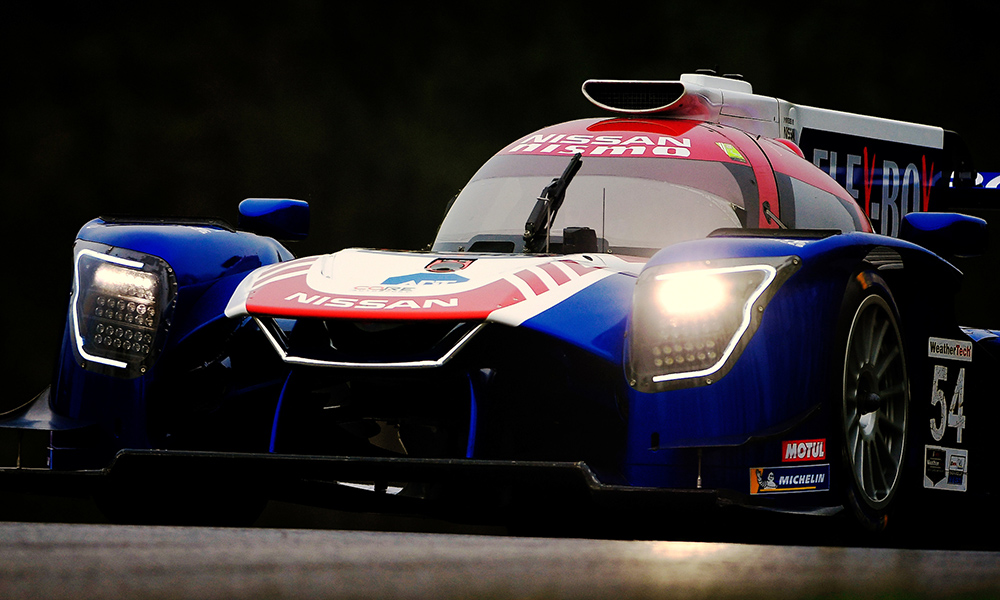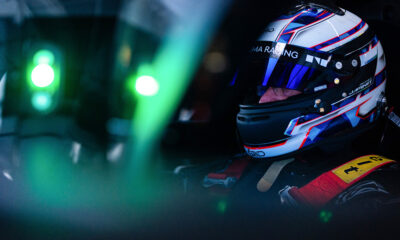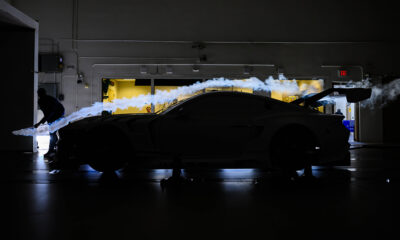
Photo: Scott LePage/IMSA
IMSA’s next-generation DPi regulations are expected to feature increased styling measures, by “opening up the boxes” that manufacturers have to work with, according to IMSA’s VP of Competition Simon Hodgson.
The sanctioning body, which has confirmed plans of an evolutionary step for the so-called ‘DPi 2.0’ formula, is looking to give manufacturers additional styling freedoms in existing areas, in an effort to showcase stronger brand recognition.
It was a topic of discussion during last week’s DPi 2.0 steering group meeting at Mid-Ohio, which involved current and prospective manufacturers, as well as constructors and other industry leaders to help shape the new-for-2022 regs.
“What we’ve done is, there’s currently aspects of the car, we call the ‘S boxes’ and ‘F boxes,'” Hodgson told Sportscar365.
“S boxes are the standard items and based on the LMP2 car that you can’t change like the monocoque, the floor, the splitter, the diffuser, things like this.
“The F boxes are obviously much more freedom in certain areas around the car that the manufacturers have used to enhance their styling or to produce or portray their design from the front of the car through the sidepod through the rear.
“We’ve take those same F boxes and extended them, whether they’re up or down, but based on what we presented to all of the manufacturers, they’ve said that’s good because the base platform is the same and yet we can actually do more with that.”
Hodgson indicated the enlarged scope may also come with a minimum level of styling required from each manufacturer.
Currently, DPi cars from Cadillac, Mazda, Acura and Nissan all vary significantly in terms of styling cues, with some only having made minor adjustments from their constructor’s stock LMP2 bodywork.
Hodgson said: “IMSA’s desire would be to bring everybody to a very similar level of styling because you can open up these boxes but if somebody chooses not to do it…
“We want everybody to move up to be represented with what message they’re trying to convey with the brand.
“IMSA can certainly control a lot of that whether it’s through the aero specifications that we state, but all of that as well is a part of the regulations that has been developed now.”
With the goal of finalizing an initial draft set of regs by the end of the year, Hodgson said they will be working through more specific technical details and analysis on the aero evolutions in the months to come.
“We’ve gone from this general packaging conceptual idea [of] more styling, mild hybridization, current platform, into… start[ing] to talk with our representatives from a technical standpoint whether it’s aero, hybridization, constructor packaging,” he said.
“There will be more focused discussions between people in these other companies, whether it’s a constructor or a manufacturer, to reach a decision making time where we’re now creating and closing in on a definitive technical specification.
“All the time [we’ll be] keeping the big packaging picture in mind. If we get too focused on one single element and forget that there’s an impact on the rest of the complete package, that’s something we won’t do.”
Hodgson: Additional DPi Constructors “Hasn’t Been a Topic of Conversation”
The prospects of having additional prototype constructors in DPi 2.0 hasn’t been a topic of conversation according to Hodgson, who affirmed that the new regulations will be “much more” in IMSA’s control.
IMSA adopted the FIA and ACO’s four approved LMP2 constructors to build DPi cars, with ORECA, Multimatic, Ligier Automotive and Dallara all still actively involved in DPi competition as well as discussions for IMSA’s new regs.
“I think we already evolved this platform based on the LMP2 constructors that are involved,” Hodgson said. “The ACO obviously made some changes with the constructors involved in LMP3 [for 2020].
“You will see what we are doing with DPi 2.0 is much more in IMSA’s control.
“Right now our current partners are the constructors and manufacturers and there’s an understanding with them on how we operate. Right now [adding new constructors] hasn’t even been a topic of conversation.
“We’re working through the technical challenges and solutions associated with the people that are either currently involved or the interested parties.”
























